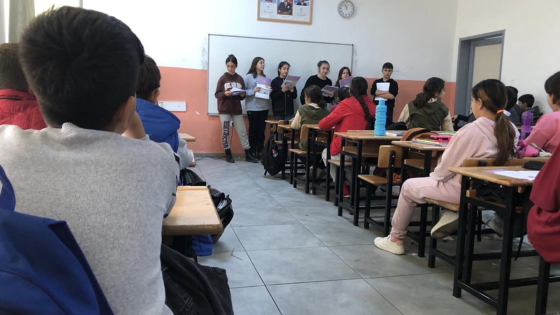According to the World Health Organisation (WHO), every year 100 million people are pushed into poverty and 150 million people suffer financial hardship because of out-of-pocket expenditure on health services. Out-of-pocket payments comprise 32% of total health expenditure worldwide.1
The goal of universal health coverage is for all citizens obtain adequate and basic health services without fear of financial hardship from unaffordable out-of-pocket payments. A question facing all countries, then, is how to establish health financing systems that can achieve and maintain universal coverage of health services. Countries living up to this challenge have usually taken two main approaches. In the first group are countries that have taken a predominantly demand-side approach through mechanisms such as health insurance, user-fees on the basis of ability-to-pay, and conditional cash transfers. In the second group are several countries that have opted for mainly supply-side schemes through extending government-financed public provision of healthcare services, or creating incentive mechanisms that financially motivate providers to expand their coverage.
The emerging consensus from the literature focusing on the demand-side healthcare financing reforms is that extending health insurance coverage improves both access and utilisation, at least among the targeted groups. However, the evidence on the degree to which these interventions limit out-of-pocket expenditures for services and improve health outcomes is mixed and inconclusive (see Giedion and Diaz 2010, Nicholson et al 2015 for discussion). The relatively few studies that have considered supply-side reforms, on the other hand, find that increased availability of free or heavily subsidised healthcare improves both access and health outcomes (e.g. Gruber et al 2014, Rocha and Soares 2010).
The Family Medicine Program in Turkey
In a recent research paper, we conduct a comprehensive evaluation of the impact of a supply-side healthcare intervention implemented in the Republic of Turkey on the measures of age-specific mortality and birth rates (Cesur et al 2015). Introduced in 2005, Turkey’s Family Medicine Program (FMP) has extended basic healthcare services to the entire Turkish population under a free-of-charge and single-payer system that is fully financed and administered by the central government. The key operational feature of the FMP is the assignment of each Turkish citizen to a specific family physician, who offers a wide range of basic healthcare services at easily accessible walk-in clinics called family health centres. The programme was first initiated as a pilot in 2005 in the province of Düzce, and gradually expanded to cover the entire Turkish population living in all 81 provinces by the end of 2010. Currently, the FMP provides healthcare services to all Turkish citizens, and employs over 21,217 family physicians – all public employees – in 6,768 and 971 family and community health centres, respectively.2
There is evidence crediting the FMP with increased patient satisfaction and healthcare utilisation (Baris et al 2011, WHO 2008), but there has not been a rigorous evaluation of the programme’s impact on measures of health outcomes. This is despite the scope and the scale of the Turkish programme, which makes it arguably one of the most ambitious and comprehensive efforts ever implemented in a developing country with the goal of achieving universal health coverage.
The signature feature of the Turkish FMP is the assignment of every citizen to a ‘family physician,’ who constitutes the central and first point of contact for patients. Every Turkish citizen is required to register with a particular family physician who is in charge of providing a wide range of healthcare services at neighbourhood clinics that operate on a walk-in basis. Through the FMP, essential and primary healthcare services are treated through the family health services located within the communities. For conditions that are more complicated or require specialists, patients are referred to hospitals. Therefore, the FMP also helps to reduce the pressure and the waiting time for more serious and complicated conditions at the hospitals, which in turn might improve health at a lower cost.
The FMP can influence birth rates through the direct provision of contraceptive services, such as birth control pills and condoms, as well as changing women’s fertility behaviour via health counselling and education on reproductive health. Changes in mortality can be attributed to the fact that the FMP has dramatically improved the quality of and the access to primary care in terms of preventive, curative, and rehabilitative services, especially for pregnant women, new mothers, infants, children, and the elderly, whose healthcare needs are the major focus of the FMP (WHO 2012a, WHO 2012b).3
The FMP has essentially established a socialised medicine programme for basic healthcare services, as the services are provided free-of-charge by state-employed family physicians. This is in sharp contrast with most other interventions, especially those concerning demand-side incentives, which primarily focus on the impact of reducing out-of-pocket healthcare expenses. Additionally, there is a growing conviction among the leading global health organisations, policymakers, and practitioners about the importance of achieving universal health coverage – that is, ensuring basic and affordable healthcare services to citizens irrespective of their ability to pay (Nicholson et al 2015, Rottingen et al 2014, United Nations Sustainable Development Solutions Network 2014, Wagstaff 2014, WHO 2014a). According to this view, a key step towards universal coverage is to extend an affordable and basic package of services to all citizens as opposed to an approach that prioritises specific populations (e.g. the poorest in society, or people in informal employment) by offering them a broader range of services (Nicholas et al 2015, Rottingen et al 2014). However, this endorsement mainly comes from the failure of insurance-based interventions in achieving universal coverage or improving health outcomes and the evidence drawn from the relatively small-scale randomised controlled trials conducted in poor or developing countries. Investigations of large-scale or nationwide reforms are scarce simply because such interventions are rare. Therefore, the Turkish FMP presents a unique opportunity to provide insights into the impact of a nationwide supply-side intervention on population health.
In Cesur et al (2015), we use data for the period of 2001-2013 and exploit the fact that the FMP rolled out gradually across Turkish provinces and over time in order to identify the programme’s effect on age-specific birth and mortality rates in Turkey. Our strategy assumes that the outcome measures follow a parallel trend between provinces with and without a FMP, and depart from each other only following the implementation of the program. Support for this assumption can be found in Figures 1 and 2, which show a clear overall pattern of a divergence in both the outcomes of birth and mortality rates only after the implementation of the FMP. Therefore, it is unlikely that our analysis would simply reflect the continuation of some pre-existing trends in the provinces that gain access to the FMP. Our point estimates from the difference-in-differences analyses indicate that the FMP has caused reductions in both mortality and birth rates. However, the benefits associated with the FMP appear to be the strongest among the most vulnerable populations – infants and the elderly for mortality rates, and teenagers for birth rates. Furthermore, our results indicate that the programme resulted in a more rapid reduction in mortality in provinces with a higher baseline mortality rate. This implies that the FMP might have also contributed towards an equalisation of the mortality disparities across provinces.
Implications
Several recent studies highlight the importance of supply-side reforms in improving public health and reducing disparities in health outcomes in countries like Brazil (e.g. Rocha and Soares 2010) and Thailand (e.g. Gruber et al 2014). Our analysis adds to this momentum by documenting evidence on the effectiveness of a nationwide supply-side intervention by the Republic of Turkey, which emphasises direct service provision and effective government oversight. Our analysis provides further compelling evidence in favour of the view that extending healthcare services to all citizens is critical to achieving universal coverage and improving public health.
Figure 1. Differences in birth rates between FMP and non-FMP provinces

Notes: The figure displays the estimates and 95% confidence intervals. The reference category is ‘one year prior to the implementation of the FMP.’
Figure 2. Differences in mortality rates between FMP and non-FMP provinces

Notes: The figure displays the estimates and 95% confidence intervals. The reference category is ‘one year prior to the implementation of the FMP.’
References
Baris, E, S Mollahaliloglu and S Aydin (2011) “Healthcare in Turkey: From laggard to leader”, British Medical Journal, 342: c7456.
Cesur, R, P M Güneş, E Tekin and A Ulker (2015) “The value of socialized medicine: The impact of universal primary healthcare provision on birth and mortality rates in Turkey”, NBER, Working Paper 21510.
Giedion, U and B Y Diaz (2010) “A review of the evidence”, in M L Escober, C C Griffin and P R Shaw (Eds.), The impact of health insurance in low- and middle-income countries, pp. 13–32, Washington, DC: Brookings Institution Press.
Gruber, J, N Hendren and R M Towsend (2014) “The great equalizer: Health care access and infant mortality in Thailand”, American Economic Journal: Applied Economics, 6(1): 91-107.
Nicholson, D, R Yates, W Warburton and G Fontana (2015) “Delivering universal health coverage: A guide for policymakers”, Report of the WISH Universal Health Coverage Forum, World Innovation Summit for Healthcare, Qatar.
Rocha R and R Soares (2010) “Evaluating the impact of community-based health interventions: Evidence from Brazil’s Family Health Program”, Health Economics, 19(S1):S126–S158.
Rottingen, J A et al (2014) “Shared responsibilities for health: A coherent global framework for health financing”, Final report of the Centre on Global Health Security Working Group on Health Financing, London: Chatham House.
United Nations Sustainable Development Solutions Network (2014) Health in the framework of sustainable development, Health thematic report, United Nations.
Wagstaff, A (2014) “We just learned a whole lot more about achieving universal health coverage”, World Bank, Retrieved from http://blogs.worldbank.org/developmenttalk/we-just-learned-whole-lot-more-about-achievinguniversal-health-coverage
World Health Organization (2008) “Evaluation of the organizational model of primary care in Turkey”, WHO Regional Office for Europe, Copenhagen.
World Health Organization (2012a) “Successful health system reforms: The case of Turkey”, A report by WHO Regional Office for Europe, Denmark, Retrieved from http://disab.saglik.gov.tr/yonetim/Uploads/files/kitaplar/Successful%20Health%20System%20Reforms-The%20Case%20of%20Turkey.pdf
World Health Organization (2012b) Turkey Health System Performance Assessment 2011, WHO Regional Office for Europe report, Denmark. Retrieved from http://www.euro.who.int/__data/assets/pdf_file/0004/165109/e95429.pdf
World Health Organization (2014a) Making fair choices on the path to universal health coverage, WHO Consultative Group on Equity and Universal Health Coverage final report, World Health Organization, Retrieved from http://www.who.int/choice/documents/making_fair_choices/en/.
Footnotes








